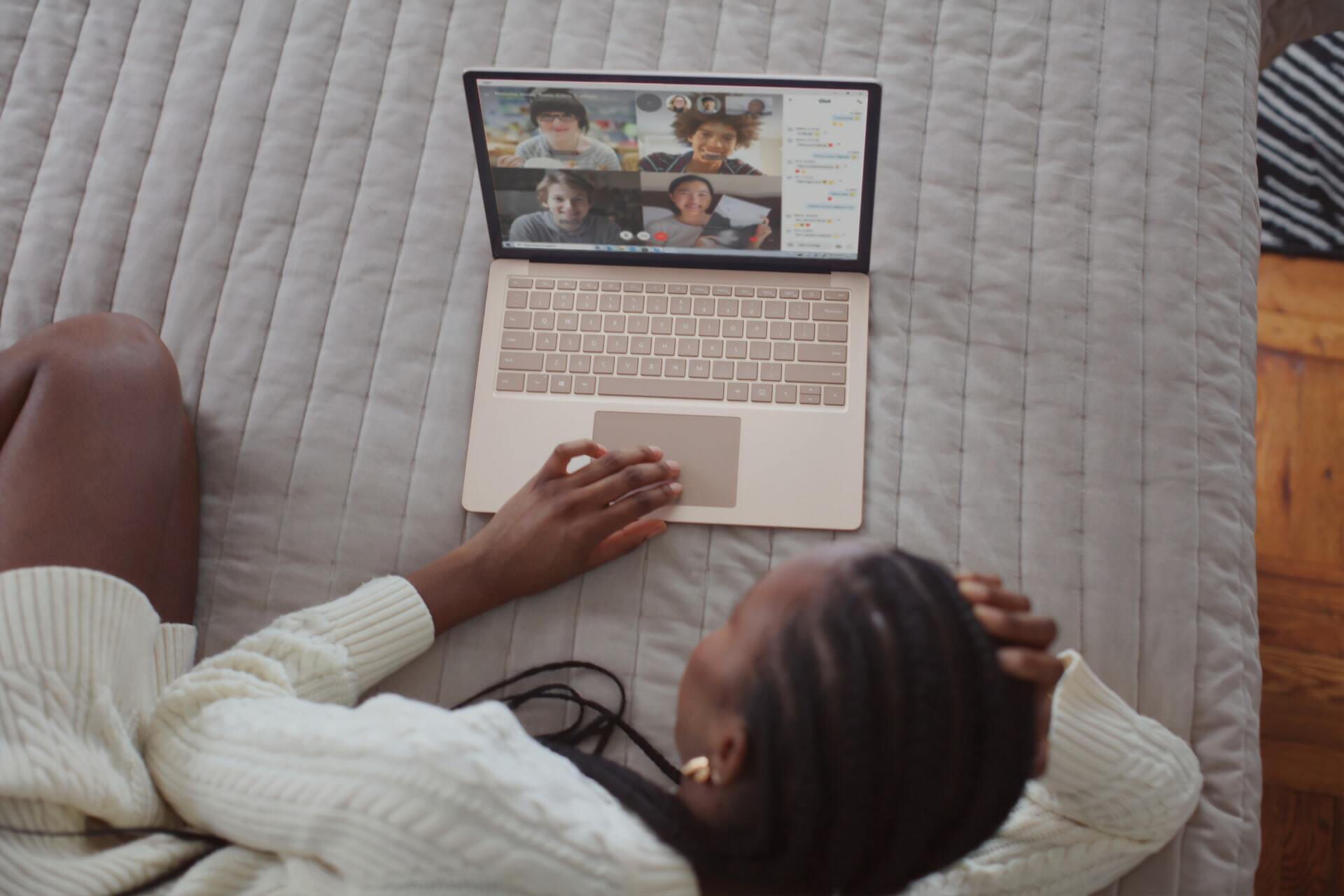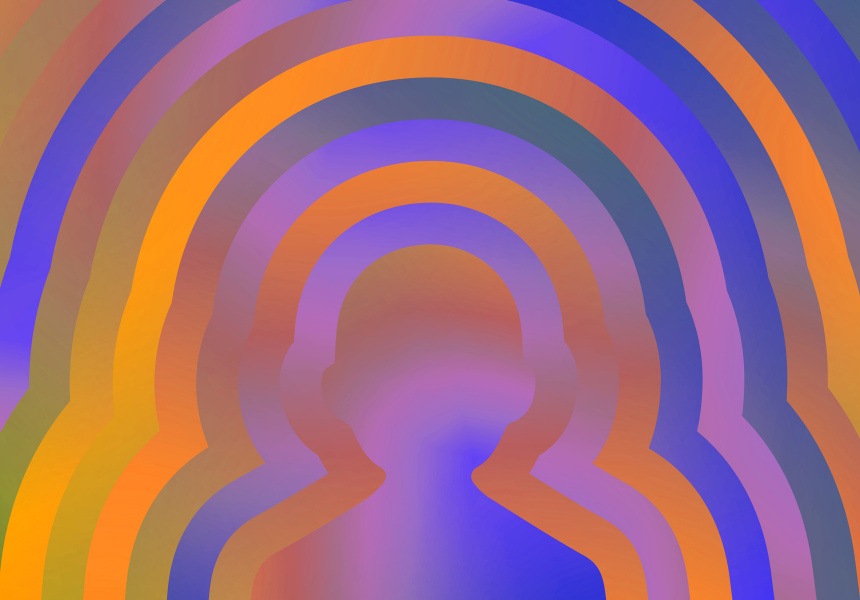Have the lines on my neck always been this deep? Is my hairline receding? Do I have a double chin? Video conferencing platforms – for work or to catch up with friends – have been a helpful tool during lockdowns. But seeing what we look like in daily video calls has been distracting. In some cases, it’s all we can look at.
Earlier this year, Professor Susan Rossell – a cognitive neuropsychologist and professorial research fellow at Swinburne’s Centre for Mental Health – published a paper on the impact of video calling on appearance dissatisfaction and subsequent likelihood of people seeking beauty treatments during the Covid-19 pandemic. Rossell and her colleagues identified a worrying trend suggesting up to a third of Australians now have significant dysmorphic concerns.
“We’ve known this about people with body dysmorphia (BDD) for 20 or 30 years now,” says Rossell. “Last year we started to use these online tele-conferencing facilities for our workplace, and hundreds of millions of us across the world were using it as our only form of communication with our work colleagues – and one of the things that Zoom and other tele-conferencing services does, is that not only does it show you your colleagues, but it also shows you yourself.
Never miss a moment. Make sure you're signed up to our free newsletter.
SIGN UP NOW“What Zoom dysmorphia is – and we showed it really nicely in our publication – is that people who have a tendency for significant body issue concerns, and tendencies towards having body dysmorphia, instead of being able to attend to their whole screens – to their colleagues, friends, relatives – become very attached to themselves and are only really able to engage or look at themselves when they are looking at their screen.”
How does Zoom dysmorphia compare to other mental health disorders?
At this stage, Zoom dysmorphia is a buzzword – it’s the latest way of identifying how technology is impacting other serious mental health disorders. For people with body dysmorphia, “when they look at themselves, think about themselves or feel themselves, [they] think they have a substantial abnormality or deficit – which they see when they look in the mirror or in reflected surfaces. They get very attached to looking and checking and making sure the ‘ugliness’ or deformation is still there,” Rossell tells Broadsheet.
Rossell explains the tendency to look at ourselves during video calls is one element of Zoom dysmorphia – the other is a fixation on our image and an inability to dismiss any negative thoughts about our appearance, and that’s similar to body dysmorphic disorder.
“Certainly people that have BDD tendencies, and people that have high body image concerns, are the people showing this – high body image concern doesn’t mean you have BBD.”
Those experiencing Zoom dysmorphia tend to show other psychological characteristics of concern, which can be further impacted by stay-at-home restrictions.
“They are people who are experiencing increased stress, increased anxiety, increased depression. So it would suggest that these people are feeling the consequences of social isolation and working at home more than perhaps their peers,” she says.
How many people are affected by Zoom dysmorphia?
Rossell tells us when she first started working in BBD, it was understood that around one per cent of the worldwide population had a clinical diagnosis of body dysmorphic disorder.
“I don’t know what that figure is anymore, because there are lots of elements to people having really profound dysmorphic concerns that could reach clinical levels. Some of the data we have more recently suggests that up to a third of the population now have such significant dysmorphic concerns that they would reach clinical distress. That’s an awful lot of people.”
Most people are able to see elements of their appearance and dismiss negative thoughts – for those experiencing significant concerns, “it’s always on their mind, it’s preventing them from getting on with everyday work and education, it’s associated with being extraordinarily anxious or depressed.”
Psychologist Georgie Lavan, from The Indigo Project, a progressive psychology practice in Sydney, tells Broadsheet she’s observed an increase in patients noting dissatisfaction with their faces.
“During lockdown, I’ve found clients who have long-standing body concerns have more of a focus towards dissatisfaction with facial features, noticing it through Zoom meetings and social catch-ups,” she says. “No one is coming to me saying ‘I am suffering from Zoom dysmorphia’ – they might say they have concerns with their acne or don’t like the shape of their nose.”

It can present opportunities for comparing our appearances with others
“Facetime, Zoom, and video conferencing tools create an opportunity to not only be preoccupied with your own reflection, but it also gives people the chance to engage in what we call ‘upward or downward comparisons’,” says Lavan. “Someone might observe a perceived flaw and go ‘okay how do I feel about myself versus that person?’”
Lavan explains body image concerns might also present themselves differently in different people. “When it comes to any body image concerns, there are those who are completely avoidant of their reflection – they might cover up mirrors and not want to look at themselves – versus those who will spend excessive periods of time body-checking.”
Lavan says it’s worth remembering that seeing yourself on screen is a warped perception of self. “It’s not a true reflection of what’s going on. Even with a front-facing camera, that in itself is a warped perception of self when you look back at your reflection.
“First and foremost, it’s about being able to notice if this is something that’s creating a great amount of distress: Am I becoming increasingly occupied by my self-image? Reach out and find a healthcare professional to speak to someone about this,” she says.
More people are seeking facial treatments
Dermatologist Dr Liz Dawes-Higgs tells Broadsheet the impact of people seeing themselves in Zoom meetings has led to more facial treatments.
“People are much more aware of their appearance, and more so with Zoom than with selfies. People now see themselves interacting in a meeting in a way they’ve never seen themselves before,” she says. “This has translated into more people focusing on self-care, particularly the face and consequently a rise in facial treatments.”
Lavan says it’s understandable that there are trends towards more people consulting dermatological procedures.
“What I think a lot of people are reflecting on right now is lost time. I think a lot of people want to come out of this feeling like they are a better version of themselves,” she says. “Whether that means going to get a cosmetic procedure, or now they have extra time to pursue procedures because they’re working from home.”
Seeking facial treatments or focusing on improving your appearance is not the same as having body dysmorphia. That said, if you are experiencing stress in association with seeing your image on screen there are ways you can reduce the impact.
How to reduce the impact of Zoom dysmorphia
“What we’ve been telling people to do is to use the feature [in Zoom] where you can switch your image off. After a while it really helps,” says Rossell. “You can still be visible to the people you’re talking to.
“If you think you’re becoming fixated on your image, the other thing is to recognise that you are doing that and talk to people about it – see your GP for support,” she adds.
For Lavan and The Indigo Project, using video conferencing tools has helped her clients maintain their self-care practice. “With the current limitations it means people can access it between work meetings and make sure that they’re continuing working on their mental health as part of self-care during such a challenging time,” she says.
“Right now, particularly with lockdown, it’s really important to be kind to yourself. We’re all feeling vulnerable and knowing that it is okay to have difficult days and practice self-compassion and being gentle is really important.”
We can all support each other too, by engaging in more non-appearance based dialogue and opting for socially distanced catch-ups or phone calls instead. Lavan says, “It’s about knowing your limits, so we’re not constantly looking down the lens of a camera.”

